CLIMATE CAPITAL
Daring To Conquer Plastic Pollution With Bricks
Gjenge Makers addresses the duo issues of plastic waste and the housing crisis through its plastic brick solution. Going by its “Build Alternatively, Build Affordably” model, it seeks to provide a crucial product that could empower individual communities by giving them the resources needed to rise out of poverty.
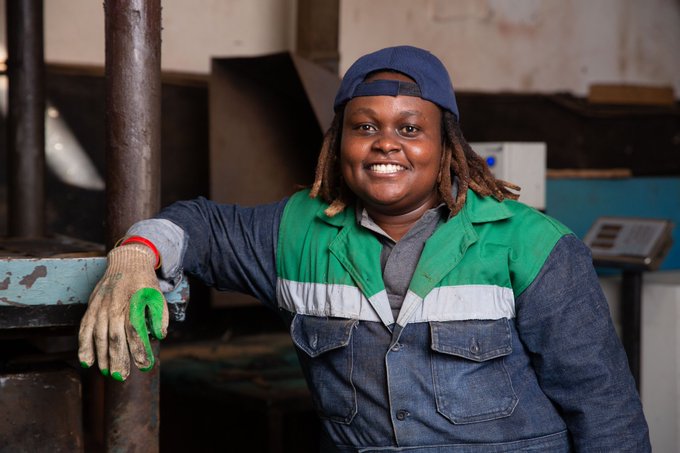
: Nzambi Matee’s Gjenge Makers recycles plastic waste into durable, affordable bricks, addressing Kenya’s housing crisis with sustainable construction materials.
By Charles Wachira
“ As I like saying, you have to be true to your why. Why are you doing whatever you are doing? What is the motivation behind it? For me, I was just tired of being on the sidelines of seeing plastics pollute the environment. And see where we are today. So act when you can and let the chips fall where they may,” says Nzambi Matee.
It was unmistakably her. Donning light blue overalls spotting visibly dark grease, her 5 ft 6 inches frame stood hospitable and somewhat down-to-earth in functional yellow boots. While a white beaded rosary lazily dropped on her neck, creating an indelible impression of a measured personality, if not spiritual.
And although her attendant mature girl locs gave her a tomboyish demeanor, her elocution underlined a polished elegance that betrayed a girl about town socialization.
Meet Nzambi Matee, 33, the 2020 Young Champion of the Earth winner, the UN’S highest environmental honour, given to individuals, groups and organizations that have had a transformative impact on the environment.
She’s the founder of Gjenge Makers Ltd, a Nairobi based social enterprise that addresses the prevailing issue of waste pollution in Kenya’s capital.
This former alumna of Jomo Kenyatta University of Agriculture and Technology (JKUAT)eponymously named after the country’s founding President who in 1978, , donated two hundred hectares of farmland for the establishment of the college where she studied physics and material science, recycles and up cycles plastics to strong and beautiful construction materials, with bricks standing out.
In a nutshell, Gjenge Makers addresses the duo issues of plastic waste and housing crisis through its plastic brick solution. And going by its “Build Alternatively, Build Affordably” model, it seeks to provide a crucial product that could empower individual communities by giving them the resources needed to rise out of poverty.
“ It’s my personal goal to help build more shelters to combat the housing crisis with our products which we make sure are accessible to essential institutions such as schools,” says Matee.
She adds that the bricks are made from a combination of plastic and sand with the pavers having a melting point higher than 350°C which makes them more durable than their concrete counterparts.
“ They have numerous advantages when compared to the conventional ones, for example they are 30 % more durable,” says the Mukuru Slums Development Project Manager, Veto Francis, whose organization is a client.
Matee worked as a data analyst and oil-industry engineer, prior to launching her company. In 2017, she quit her job and went ahead to create a small lab in her mother’s backyard home located in the eastern parts of Nairobi, a locale that nurtures a hustling and competitive spirit among denizens, where she tested sand and plastic combinations.
There she initially began manufacturing pavers.
Her neighbours understandably griped about the noise emanating from the nascent machine she was using but resentment only emboldened her to remain on track. It took a year to develop the right ratios for her paving bricks.
Like all determined entrepreneurs while she was on the throes of beginning her new act of becoming an entrepreneur she shut down her social life and plowed her entire savings into the project.
A UNEP website explained the throes of her entrepreneurship journey by stating that “Through trial and error, she and her team learned that some plastics bind together better than others. Her project was given a boost when Matee won a scholarship to attend a social entrepreneurship-training programme in the United States of America. With her paver samples packed in her luggage, she used the material labs in the University of Colorado Boulder to further test and refine the ratios of sand to plastic.”
Her time at the U.S based university gave her time to complete two important things: Finalize the machines that make the recycled materials into pavers and also refine the plastic-to-sand ratio pro-type.
Coincidentally, her workplace is located along Nairobi’s Industrial Area, which is synonymous with Kenya’s manufacturing sector, a locale found south east of the city’s Central Business District (CBD).
The location, verifiably, has a rich history.
Mooted in 1948 by the British administration, the 9.6 Km2 piece of land is a meticulous handiwork displaying the deliberate planning of the colonialists. In fact, on close scrutiny one is able to see derelict railway lines snaking on the newly carpeted tarmacked roads, encapsulating where the 1895 built Uganda-Kenya railway once did roaring business.
Today, the place still looks bustling with synonymous armies of workers who toil in the modern day factories that have resisted the temptation of relocating to more business friendly locations. But conspicuously missing are smoke spouting factory chimneys associated with fossil oil, an auspicious tell-tell sign, this East Africa state is on track of retiring fuel-oil -fired plants by 2030.
A homogeneous black gate stands in front of the workplace. You cannot see what is happening inside until when the sentry opens.
My goodness, once you are given entrée one discovers a rectangular yard that is one to behold .As paving tiles of generic colours, green, blue, black, you name it – make the place simply a beautiful riot of shades.
“ These are the sorts of bricks that we manufacture here. Right now the company generates between 1,000 and 1,500 bricks daily. They are 35% more durable than traditional bricks, seven times stronger than the usual standard bricks and they are relatively cheaper to purchase,” says Matee.
Inside the building that has a chock a –block feel noise from operating machines overwhelm the place that noticeably has a youthful crop of workers. From what I see I can tell the company has three machines, including an extruder that does the mixing of plastic waste with sand, at very high temperatures and a press that compresses the concoction.
“Since plastic is fibrous in nature the brick ends up having a stronger compression strength,” says Matee.
“ There are about 80 of us here and you can do the math of the number of people who rely on us for employment. We also contract people to supply us with waste from packaging factories which we get for free, although we pay for the plastic that we get from other recyclers,” says Matee.
Kenya’s unemployment rate currently is 10.4 percent, according to the Kenya National Bureau of Statistics.
Martin Njoroge was jobless despite holding an undergraduate degree from the local Kenyatta University until when he met Matee who offered her a job.
“Here we work in shifts, depending on the orders placed,” says Njoroge.
With some 4 million or years, inhabitants, Kenya’s capital produces around 2,400 tonnes of solid waste daily with only 45% of the waste generated undergoing any sort of recovery or treatment process. Disproportionately most of it ends up in open dumps or is burned.
From her telling, Matee was inspired to launch her business after habitually coming face to face with the scourge of plastic bags along the streets of the tenth most populated city in Africa.
“ I was seeing litter everywhere in Nairobi. It was pervasive. And while I understood that plastic waste was a global problem, I opted to do something practical and useful about the issue instead of complaining,” says Matee.
She set her mindset to singularly focus on one of the three basic needs necessary for a human being to survive including food, shelter and clothing.
“ I settled on shelter. My goal was to look at ways of converting plastic waste to assist in the provision of shelter in the housing space,” she says.
She certainly had her work cut out.
According to the Organisation for Economic Co-operation and Development (OECD), Africa has the world’s fastest urban growth rates and by 2050, its cities will be home to an additional 950 million people.
And it’s estimated that for the next 20 years 40,000 people in Africa will be relocating into its cities every day.
In fact, several recent studies project that by the end of this century, Africa will be the only continent experiencing population growth. With 13 of the world’s 20 biggest urban areas expected to be in Africa — up from just two today — as will more than a third of the world’s population.
And according to Habitat for Humanity, a global nonprofit housing organization, Kenya has an annual housing demand of 250,000 units with an estimated supply of 50,000 units, culminating in a housing deficit of 2 million units, or 80% deficit.
“ Housing affordability is a key challenge in Kenya with many people unable to afford to buy or build their own home. Only 2% of the formally constructed houses target lower-income families. About 6.4 million people, of Kenya’s urban population live in informal settlements. Many families are at high risk of diseases such as malaria, respiratory infections and or parasitic jiggers infestation,” says Habitat.
To date, Gjenge Makers has recycled more than 20 tons of plastic and officially created 112 job opportunities in the community.
“It is odd that we still have issues providing decent shelter which is a basic human need, yet plastic is a material that is misused and misunderstood for it has enormous potential,” says Matee.
So how did the thinking of an idea end up actually doing something about the thinking itself?
“We started Gjenge Makers in 2016, with a goal of reducing waste pollution in our community. We began by organizing cleanups in our community where we would sort the plastic and then resale it to recycling companies. This mode however was not creating the impact we anticipated because the rate of waste pollution was extraordinarily and exceeded what companies were buying,” says Matee.
“ After a series of research, we bumped into something fresh that involved the creating concrete using polymer. We broke down the waste plastic (HDPE & PET) at high temperature and pressure points, combined the aggregates with sand, leading us to produce our prototype and first minimum viable product (MVP) in 2017,” says Matee.
Right now, the company generates between 1,000 and 1,500 bricks per day, and Matee hopes to expand across Africa.
“ As I like saying, you have to be true to your why. Why are you doing whatever you are doing? What is the motivation behind it? For me, I was just tired of being on the sidelines of seeing plastics pollute the environment. And see where we are today. So act when you can and let the chips fall where they may,” says Matee.
Keywords:Plastic waste recycling:Sustainable construction materials:Housing affordability in Kenya:Gjenge Makers Ltd:Nzambi Matee entrepreneurship journey
CLIMATE CAPITAL
Access Bank Secures CAK Approval for National Bank Acquisition
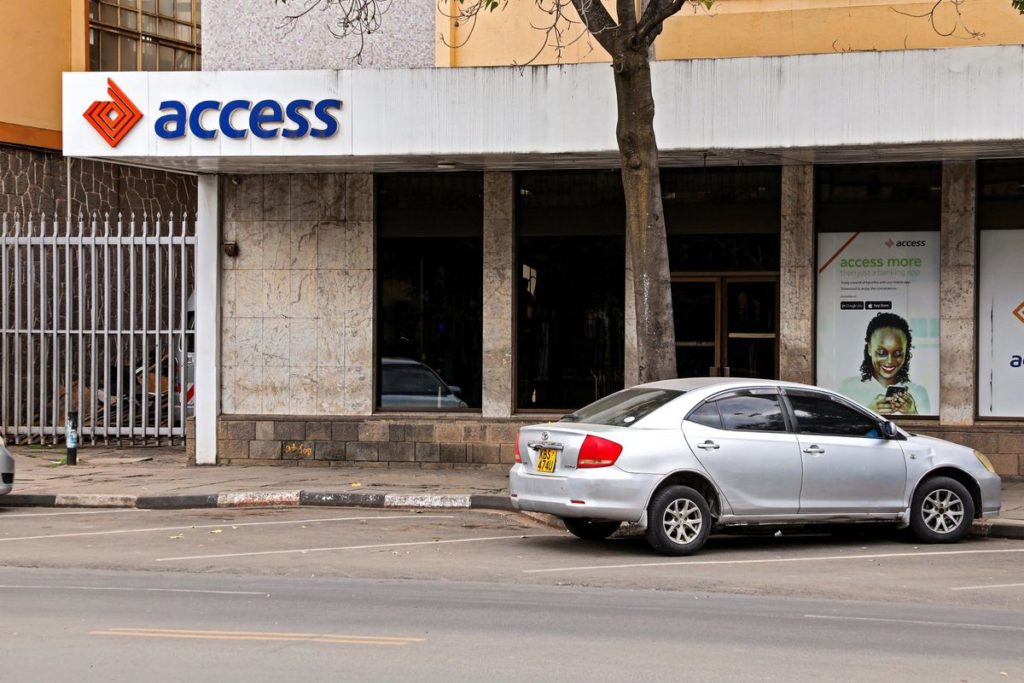
: Access Bank to acquire National Bank of Kenya for $100M, boosting market
share to 1.9% with CAK approval and workforce retention conditions.
CAK Approves Access Bank’s Acquisition of NBK with Conditions
The Competition Authority of Kenya (CAK) approved Access Bank’s acquisition of the
National Bank of Kenya (NBK) from KCB Group, requiring Access Bank to retain 80% of
NBK’s workforce for at least one year.
The Central Bank of Kenya (CBK) must now give its final approval for the deal.
Employment Retention Key to Approval
According to CAK, Access Bank must maintain 80% of NBK’s 1,384 employees and all
316 staff from its local subsidiary, Access Bank Kenya, for a year following the
transaction’s completion. “The transaction has been approved on condition that Access
Bank Plc retains, for one year, at least 80% of the target’s current workforce,” CAK
stated.
Deal Valuation and Finalization Timeline
While the deal’s value has not been disclosed, KCB Group announced in March 2024
that NBK would be sold for 1.25 times its book value. With NBK’s 2023 book value at
$79.77 million, the acquisition is estimated to be worth approximately $100 million. The
transaction is expected to conclude in November.
Expanding Access Bank’s Kenyan Presence
Access Bank’s current footprint in Kenya includes 23 branches in 12 counties. Acquiring
NBK’s 77 branches across 28 counties will significantly boost its presence and service
offerings, including retail, corporate, and Islamic banking. Access Bank, currently
ranked as a tier 3 lender, will integrate with NBK, a tier 2 institution, enhancing its status
in the market.
Market Share and Competition Analysis
The acquisition will give the merged entity a 1.9% market share in Kenya’s banking
sector. “The combined market size is unlikely to raise competition concerns since it is
low,” CAK noted. “The merged entity will face competition from other banks in the
market. Based on this, the transaction is unlikely to substantially lessen or prevent
competition.”
CLIMATE CAPITAL
Patricia Ithau: CEO of WPP-Scangroup, Leading Africa’s Marketing Giant

: She leads WPP-Scangroup PLC, the largest marketing and communication group in sub-Saharan Africa, driving innovation, business growth, and social impact across the region.
Patricia Ithau leads WPP-Scangroup PLC, the largest marketing and communication group in sub-Saharan Africa. She took over as CEO on March 14, 2022, succeeding Bharat Thakrar at the helm of this Nairobi Securities Exchange-listed company.
Under her visionary leadership, WPP-Scangroup continues to redefine the marketing and advertising landscape in East Africa through a multi-agency, multi-disciplinary approach.
Her focus on pushing the boundaries of creativity and innovation has positioned the company to drive growth and deliver groundbreaking solutions across the region.
Early Life and Academic Foundation
Patricia’s leadership journey grew from a strong academic foundation.
Patricia Ithau studied at Loreto Convent Msongari in Nairobi before earning her Bachelor of Commerce degree from the University of Nairobi.
Further expanding her knowledge, she earned an MBA in Strategic Management from the United States International University-Africa.
She also completed advanced management programs at prestigious institutions like Strathmore University, IESE Business School, INSEAD, and Oxford University, laying the foundation for a distinguished career in business leadership.
Career Milestones: L’Oréal Africa and Beyond
Before joining WPP-Scangroup, Patricia was the founding CEO of L’Oréal Africa, where she significantly drove the company’s growth and success in the region.
Under her leadership, L’Oréal’s African subsidiary generated $25 million in annual revenue, employed over 270 people, and produced 40 million units annually.
One of her key achievements was leading one of the first acquisitions of a local business by a multinational in East Africa, demonstrating her ability to drive growth and market penetration in the competitive FMCG sector.
Advocacy for Women in Leadership
Patricia has actively championed women in leadership, advocating for creating opportunities that allow women to thrive in the corporate world.
As an Ambassador for the Women on Boards Network (WOBN) in Kenya, she has worked to elevate women into leadership positions.
She holds board positions at organisations such as ABSA Bank Kenya, Jambojet Ltd, Vivo Fashion Group, and the British Chamber of Commerce.
Furthermore, Patricia actively supports corporate governance and social impact as a Trustee for the Vodafone Foundation (UK) and the M-PESA Foundation.
Overcoming Personal Challenges and Building Resilience
In addition to her professional achievements, Patricia’s journey has been marked by resilience.
She was crowned Miss Kenya in 1986 during her first year at the University of Nairobi.
Navigating societal judgments and stereotypes during this period helped shape her leadership abilities, teaching her invaluable lessons in self-confidence and perseverance.
Recognition and Awards
Patricia’s contributions to Kenya’s economic growth and development have not gone unnoticed.
In 2020, she was awarded the Head of State Commendation (HSC) for her outstanding role in business development.
Patricia is also an accredited executive coach and certified Emotional Intelligence practitioner, emphasising her commitment to fostering future leaders who embrace emotional intelligence and holistic leadership practices.
Corporate and Social Impact
Patricia’s leadership extends beyond the corporate world.
As East Africa Regional Director for the Stanford Institute for Innovation in Development Economies (SEED), Patricia has driven sustainable business growth and job creation across sub-Saharan Africa.
Through SEED, she has supported over 200 businesses in tackling leadership challenges and fostering innovation, contributing significantly to the region’s economic transformation.
Family and Personal Values
Patricia is also deeply committed to her family.
She proudly raises her two daughters, Mueni and Makena, instilling in them the values of hard work and resilience.
Her role as a mother aligns with her broader mission of mentoring and guiding the next generation of leaders.
Conclusion: A Legacy of Leadership and Innovation
Patricia Ithau leads with vision, innovation, and a strong commitment to social sustainability, from her strategic achievements at L’Oréal Africa to her current role as CEO of WPP-Scangroup.
Her dedication to advancing women in leadership, her contributions to the business community, and her efforts in developing future leaders make her a lasting influence on Africa’s corporate sector, inspiring and driving progress across the region.
CLIMATE CAPITAL
Meet Kariuki Ngari: Standard Chartered Bank’s new CEO of Africa. What’s Next?
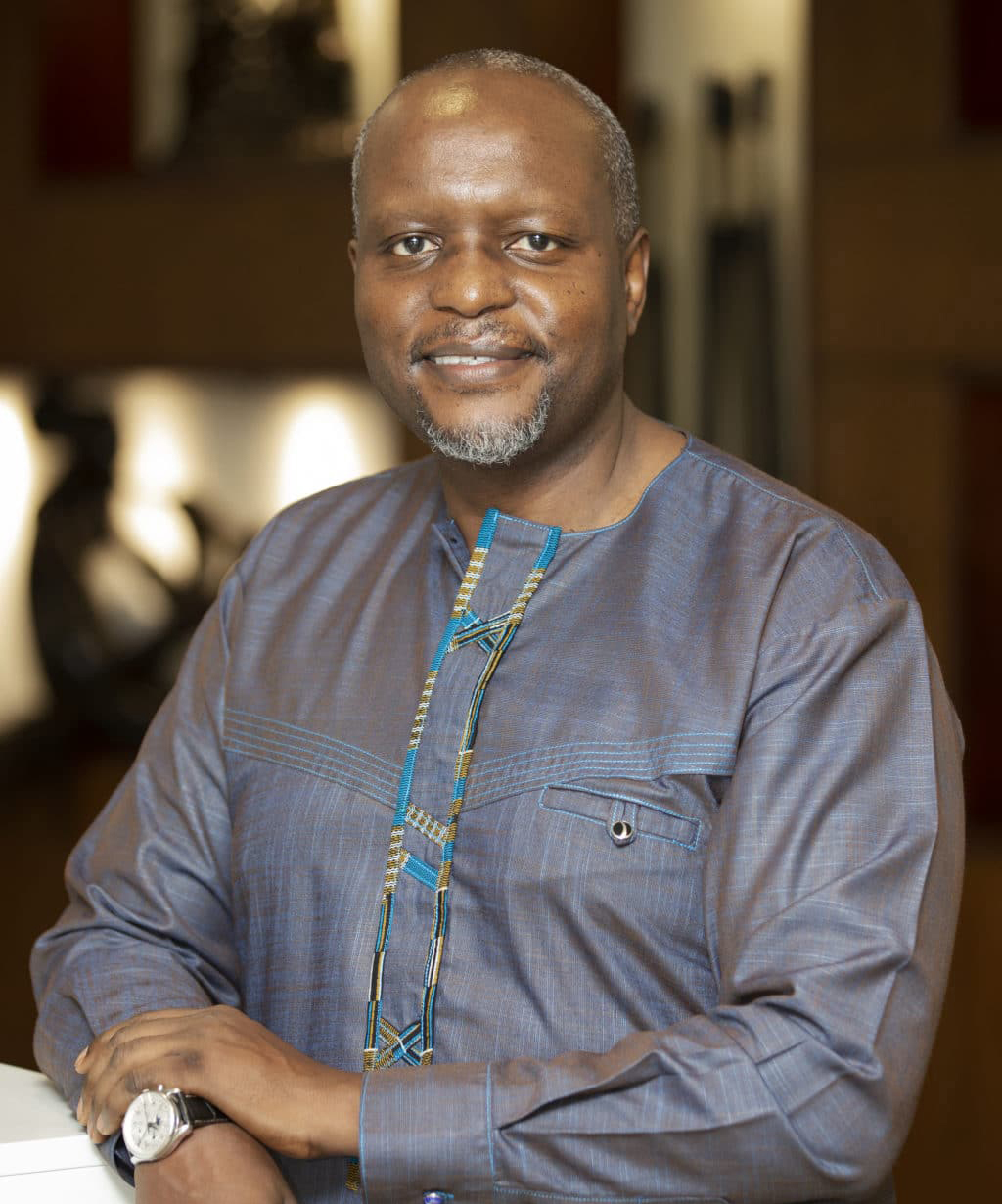
: The nomination speaks volumes about the bank’s commitment to its African operations and its strategic vision for growth on the continent.
: Kariuki’s vast experience and market insight make him a catalyst for growth. With his strategic vision, Standard Chartered can seize opportunities, expand, and provide tailored financial solutions
In a significant move within the banking sector, Kariuki Ngari ascended to CEO Africa at Standard Chartered Bank on April 3, marking a pivotal moment in his illustrious career. As he steps into this new role, Ngari faces a landscape rife with challenges but brimming with opportunities. He is poised to leverage his expertise and track record to propel the bank’s growth trajectory across Africa.
Challenges and Opportunities:
Navigating Regulatory Complexity: One of Kariuki’s foremost challenges will be navigating the diverse regulatory environments across the African continent. With each country presenting unique regulations and compliance requirements, Ngari must adopt a nuanced approach to ensure Standard Chartered Bank’s operations remain compliant while driving growth.
Adapting to Market Dynamics: African markets are diverse and constantly changing. Rapid shifts in consumer preferences, technological advancements, and intense competition characterise them. Kariuki must stay agile and adaptive, seizing opportunities for innovation and market expansion while mitigating risks associated with changing market dynamics.
Fostering Financial Inclusion: Africa offers significant opportunities for financial inclusion, as a large portion of the population remains underserved by traditional banking services. Kariuki has the opportunity to drive initiatives that promote financial literacy, expand access to banking services, and foster inclusive economic growth across the continent.
Previous Achievements and Experience:
Before assuming the role of CEO of Africa, Kariuki served in various leadership positions within Standard Chartered Bank, demonstrating his exceptional leadership capabilities and strategic vision. Some of his notable achievements include:
Driving Digital Transformation: Kariuki played a pivotal role in driving Standard Chartered Bank’s digital transformation agenda, spearheading initiatives to enhance the bank’s digital capabilities and customer experience. Under his leadership, the bank successfully launched innovative digital banking solutions tailored to the African market, driving customer engagement and retention.
Expanding Market Presence: Kariuk has a proven track record of expanding Standard Chartered Bank’s market presence across Africa, identifying growth opportunities, and forging strategic partnerships to penetrate new markets and strengthen the bank’s foothold in existing ones.
Promoting Sustainable Finance: Kariuki is committed to promoting sustainable finance and responsible banking practices. He has championed initiatives focused on environmental, social, and governance (ESG) principles, integrating sustainability into the bank’s business strategy and operations.
Expectations in the New Role:
As CEO of Africa, stakeholders expect Kariuki to bring his wealth of experience, strategic acumen, and unwavering commitment to driving Standard Chartered Bank’s growth agenda in Africa. Key expectations include:
Strategic Vision: Kariuki will continue articulating a clear vision for Standard Chartered Bank’s African operations, leveraging market insights and industry trends to identify growth opportunities and drive sustainable value creation.
Innovation and Digitalization: Ngari will prioritise innovation and digitalisation, harnessing the power of technology to enhance the bank’s offerings, streamline operations, and deliver superior customer experiences.
Stakeholder Engagement: Ngari will intensely focus on stakeholder engagement, fostering relationships with clients, regulators, shareholders, and communities to ensure alignment with the bank’s objectives and values.
The nomination of Kariuki to the position of CEO of Standard Chartered Africa speaks volumes about the bank’s commitment to its African operations and its strategic vision for growth on the continent. Here are a few critical points that the nomination signifies:
Recognition of Talent: Standard Chartered Bank’s decision to appoint Kariuki Ngari as CEO of Africa reflects the bank’s recognition of his exceptional leadership qualities, strategic acumen, and track record of success within the organisation. It indicates that the bank values talent from within its ranks and is committed to nurturing and promoting internal talent to key leadership positions.
Focus on the African Market: By appointing a CEO specifically for the African region, Standard Chartered Bank underscores the importance of the African market in its global strategy. It signifies the bank’s commitment to unlocking the vast opportunities presented by the African continent and leveraging its potential for growth and expansion.
Continuity and Stability: Kariuki’s nomination brings continuity and stability to Standard Chartered Bank’s African operations. With his deep understanding of market dynamics, extensive experience within the organisation, and proven track record of success, Ngari is well-positioned to provide steady leadership and drive the bank’s growth agenda in Africa.
Emphasis on Local Leadership: The appointment of Kariuki, who is of Kenyan nationality, also highlights the importance of local leadership and expertise in driving success in the African market. It demonstrates Standard Chartered Bank’s commitment to fostering a diverse and inclusive leadership culture that reflects the communities and markets it serves.
Strategic Direction: Kariuki’s nomination signifies the bank’s strategic direction and priorities for its African operations. It suggests a focus on driving innovation, digital transformation, and sustainable growth in key markets across the continent, with Ngari leading the charge in executing the bank’s vision and objectives in Africa.
Kariuki’s appointment as CEO of Africa at Standard Chartered Bank marks a significant milestone in the institution’s journey towards consolidating its position as a premier financial institution on the African continent. With an unwavering focus on excellence, strategic foresight, and a proven track record of leadership, Kariuki brings a wealth of experience and expertise that positions him as a catalyst for transformative growth.
His elevation underscores the bank’s confidence in his abilities and its steadfast commitment to fostering homegrown talent and leveraging local expertise to drive success in key markets. Kariuki’s appointment represents more than just a change in leadership; it symbolises a new era of innovation, resilience, and adaptability in navigating the intricacies of the African financial landscape.
In the face of evolving market dynamics, regulatory complexities, and competitive pressures, Kariuki’s leadership will be instrumental in steering Standard Chartered Bank towards sustainable growth and value creation. His strategic vision, coupled with a deep understanding of the African market, will enable the bank to capitalise on emerging opportunities, expand its footprint, and deliver superior financial solutions tailored to the diverse needs of its customers.
Moreover, Kariuki’s appointment reinforces Standard Chartered Bank’s commitment to driving positive impact and fostering inclusive growth across the continent. Kariuki is poised to make a meaningful difference in millions of individuals and businesses across Africa by championing initiatives promoting financial inclusion, sustainability, and responsible banking practices.
In essence, Kariuki’s nomination heralds not just a new chapter but an entire volume in the bank’s narrative of success in Africa. It signifies a renewed sense of purpose, a reaffirmation of values, and a shared commitment to shaping a brighter future for the continent’s economies and communities. As he assumes the mantle of leadership, Ngari stands at the forefront of Standard Chartered Bank’s journey towards becoming the partner of choice for businesses, investors, and individuals alike, propelling Africa towards a future of prosperity and opportunity.
-
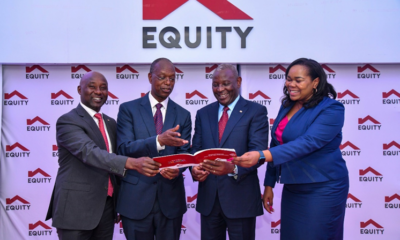
 Business & Money8 months ago
Business & Money8 months agoEquity Group Announces Kshs 15.1 Billion Dividend Amid Strong Performance
-

 Politics3 months ago
Politics3 months agoFred Okengo Matiang’i vs. President William Ruto: A 2027 Election Showdown
-
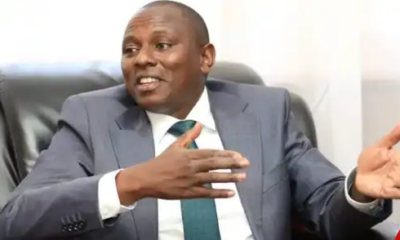
 Politics2 months ago
Politics2 months agoIchung’wah Faces Mt. Kenya Backlash Over Gachagua Impeachment Support
-
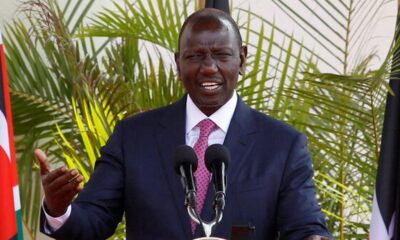
 Politics4 months ago
Politics4 months agoPresident Ruto’s Bold Cabinet Dismissal Sparks Hope for Change
-
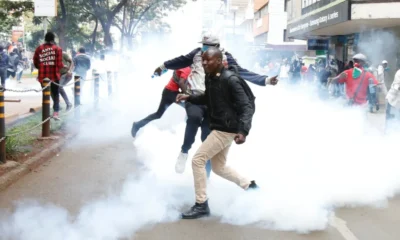
 Politics5 months ago
Politics5 months agoKenya Grapples with Investor Confidence Crisis Amid Tax Protest Fallout
-
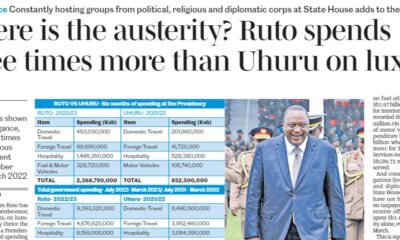
 Politics5 months ago
Politics5 months agoPresident Ruto’s Lavish Spending Amid Kenya’s Economic Struggles Sparks Outrage
-
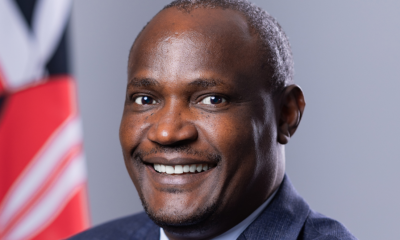
 Politics3 months ago
Politics3 months agoJohn Mbadi Takes Over Kenya’s Treasury: Challenges Ahead
-
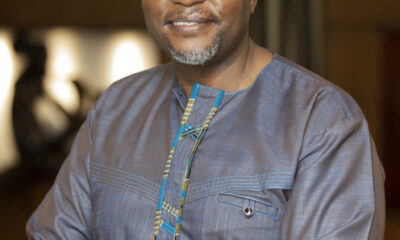
 Business & Money1 week ago
Business & Money1 week agoMeet Kariuki Ngari: Standard Chartered Bank’s new CEO of Africa. What’s Next?





